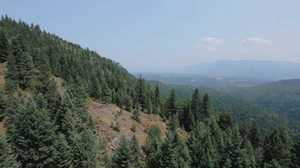Patriots of the Insurrectionist Kind
How the far-right movement’s long-running war on democracy went mainstream.

The mob of right-wing extremists who invaded the U.S. Capitol on January 6 used a familiar word to identify themselves.
“Patriots!” a number of insurrectionists were recorded shouting as they rushed to enter through broken police barricades. Inside, the “QAnon shaman” Jake Angeli—garbed in furs and a horned hat—could be heard hailing his comrades: “Hold the line, patriots!”
In a New Yorker video taken inside, Angeli can be seen greeting other rioters inside the Senate chambers: “Heyyyy, glad to see you man. Look at you guys, you guys are fuckin’ Patriots!” Leading a prayer from the dais later, he thanked God for “filling this chamber with Patriots who love you and love Christ.”
The insurrectionists’ use of the name “Patriots,” however, is not the generic one suggesting people with a deep love of American democracy. Rather, it is an identification with the far-right conspiracist “Patriot” movement that, for the past 30 years, has been generating such antigovernment activities as organizing so-called “citizen militias,” as well as violent “sovereign citizen” extremists, border-watching “Minutemen” vigilantes, armed “III Percent” gun fanatics and, more recently, street-brawling “Proud Boys”—all of them built around an alternative far-right universe comprised of conspiracy theories.
Indeed, while the “Patriot” movement has been typically described over the decades since it began organizing in the 1990s by researchers who have monitored them as “antigovernment,” that term may not give the most accurate sense of their ideology. Given that many of them deny they are opposed to government—they in fact believe government would be just fine if they were in charge, as they believed they were under Donald Trump; they simply oppose any kind of liberal democratic government—and that many of them are unmistakable in their hostility to democratic principles and democracy itself, it is more fundamentally an antidemocratic movement.
Their hostility to democracy is reflected in one of the movement’s embedded truisms: “America is a republic, not a democracy” (which, as historian George Thomas explained in detail in The Atlantic is not just an ahistorically wrong claim, it’s a dangerously toxic one). It’s also reflected in the movement’s historic animus directed at ethnic and religious minorities, as well its openly seditionist rhetoric, and its bedrock belief that liberal democratic government is secretly in the hands of an evil “globalist” (or “communist” or “Marxist,” depending on the conspiracy theory) cabal. That hostility became starkly manifest on January 6.
The Anti-Defamation League defines the Patriot movement thus: “A collective term used to describe a set of related extremist movements and groups in the United States whose ideologies center on anti-government conspiracy theories. The most important segments of the ‘Patriot’ movement include the militia movement, the sovereign citizen movement and the tax protest movement. Though each submovement has its own beliefs and concerns, they share a conviction that part or all of the government has been infiltrated and subverted by a malignant conspiracy and is no longer legitimate.”

The use of the name originated with right-wing extremists in the mid-1980s who called themselves “Christian Patriots,” and were unabashedly racist—many of its participants could be found at annual “Aryan Congresses” assembled by the “Christian Identity” Aryan Nations near Hayden Lake, Idaho. This movement was studied in depth by sociologist James Aho in his 1990 book, The Politics of Righteousness: Idaho Christian Patriotism (University of Washington Press). Derived in many regards from the openly racist and anti-Semitic “Posse Comitatus” belief system, Christian Patriots also claimed that ordinary people could declare themselves “sovereign citizens” to free themselves from rule by the federal government (including paying taxes), and that the county sheriff was the supreme law of the land, able to countermand federal law if he deemed it unconstitutional. Civil-rights laws, public land ownership, a federal education department—these were all considered null and void in their world of radical anti-federalism.
Following the tragic outcomes of the armed federal standoffs at Ruby Ridge, Idaho, in 1992, and at the Branch Davidian compound near Waco, Texas, in 1993, an idea that had been circulating in far-right circles for several years—a strategy called “leaderless resistance” that called for forming small action-directed “cells,” along with violent acts of “lone wolf” domestic terrorism—became the consensus response among Christian Patriots. They called them “militias”—a reference intended to invoke the wording of the Second Amendment as a way to justify their existence.
Moreover, to broaden the appeal of the militias to include more secular-minded recruits, the movement dropped “Christian” and began calling itself simply the “Patriot movement.” The name stuck permanently.
At the time he blew up the Murrah Federal Building in Oklahoma City in 1995, Timothy McVeigh self-identified as a “Patriot,” as did Eric Rudolph, the 1996 Atlanta Olympics backpack bomber. The Montana Freemen—purveyors of “sovereign citizen” pseudo-legal scams and major figures in the movement—engaged in an 81-day armed standoff with FBI agents in 1996 near Jordan, Montana.
Despite the connection to public violence, however, the Patriot movement—as I explained in my 1999 book In God’s Country: The Patriot Movement and the Pacific Northwest—played the strategic role as part of a campaign for ideas and agendas from the radical right to become more mainstream. The general idea was to strip their overt bigotry (especially the innate anti-Semitism and racism) from their radical localist and nativist politics and to present them wrapped in American-flag bunting and lofty-sounding “constitutionalist” rhetoric that disguised its utterly nonsensical nature with heavy doses of jingoist jargon.
Throughout the 1990s, the Patriots continually organized their vigilante paramilitaries as militia groups, and preached the “constitutionalist” approach to government to anyone who would listen, along with their never-ending web of “New World Order” conspiracy theories, peddling maps of “FEMA concentration camps” and sightings of “UN black helicopters.” The conspiracism reached a kind of fever pitch in 1999 over the supposed looming “Y2K Apocalypse,” but after that proved to be a non-event, it then receded into a low-level hiatus during most of the early 2000s, with conspiracists mostly devoted to the massive speculation industry that sprang out of the terrorist attacks of September 11, 2001.
Among the leaders of that industry was radio host Alex Jones, a one time John Birch Society member who began his career in Texas regurgitating conspiracy theories originally concocted by the Militia of Montana and other “Patriots,” then packaging them for mass consumption. Shortly after the embarrassment of having hysterically hyped the Y2K Apocalypse, Jones seized on the 9/11 attacks as a fresh, and wildly promotable, avenue for drawing listeners into his web of fantasies. Over the years, Jones increasingly identified on-air with “the Patriots” in their “war against the globalists.”

Immigration and the U.S. border became the focus of a number of “Patriots” during the early 2000s, embodied by such vigilante border-watch groups as the Minutemen, who blended old-style Nativism with far-right “constitutionalist” ideology and “globalist” conspiracy theories to form a broad national constituency devoted to the idea that undocumented immigrants posed a grave national-security threat. The Minutemen flared into the national headlines with a mass border-watch event in Arizona in 2005, and then gradually faded into obscurity as the groups themselves became enmeshed in criminality.
Around 2008 and the election of Barack Obama to the presidency, the Patriot movement came roaring back to life. While the numbers of militia groups had declined to a mere 131 groups in 2007, they revived sharply over the next two years, with 512. By 2012, they had reached a record high 1,360 militia groups, including a number of groups dedicated to border-watching activity. However, relatively few of the movement’s leaders from the 1990s remain active to this day, many of them having subsequently died.

The revival of the Patriot movement during the Obama years primarily revolved around the Tea Party movement. By mid-2010, it had become clear that the Tea Party—first reported on by mainstream media as a kind of normalized right-wing populist revolt against liberal Democratic rule in the Obama era—had swiftly transformed into a massive conduit for conspiracy theories, ideas and agendas directly from the Patriot movement. Attending a tea party gathering after that year, particularly in places like rural Montana, was indistinguishable from the scene one could have found 15 years before at a militia gathering: the same speakers, the same books, the same rhetoric, the same plenitude of paramilitary and survivalist gear for sale.
By 2010, Patriot groups like the Oath Keepers had become the primary face of the tea party. Oath Keepers founder Stewart Rhodes boasted of his prominent role in the movement: “We like the Tea Party movement a lot, we think it's great. It's a revitalization of our core Americanism and core constitutionalism.”
Emblematic of its core of conspiracist fear mongering, the Patriot movement (and the Tea Party) also was the sector of the public that most avidly embraced the groundless conspiracy theories about Obama’s supposedly “fake” or “incomplete” birth certificate, known as the “Birther” theories.
“Patriots” and a broad swath of far-right conspiracy theorists thus were enthralled when, in 2011, Trump became the first high-profile conservative to publicly embrace the Birther theories, creating such a broad media sensation that eventually Obama conceded and ordered Hawaii officials to publicly produce the “long form” certificate in an attempt to satisfy the conspiracists. Around the same time, Trump fashioned himself as a darling of the Tea Party, telling a Fox interviewer: “I think the people of the Tea Party like me, because I represent a lot of the ingredients of the Tea Party. What I represent very much, I think, represents the Tea Party.”
Trump enjoyed substantial support for his 2016 election from an array of radical-right organizations, notably a solid phalanx comprised of Patriots. His ascension to the presidency was widely hailed by various Patriots.
In short order, the movement’s conspiracy theorists were spinning up wild claims about Marxists and “antifa” plotting to overthrow his presidency, even before he was inaugurated—and then, ten months later, they revived the same claims, but this time the conspiracy theories were picked up by right-wing media and broadly disseminated. The narrative that resulted—depicting a “violent left” that needed to be violently confronted by “patriots”—became intensely repeated throughout the 2020 election campaign, ardently adopted by such pro-Trump groups as the Oath Keepers and Proud Boys.
Trump supporters have been regularly identifying themselves to journalists and others as “Patriots” for several years now. A classic example is a California-based Trump fan—a man previously arrested on terroristic-threatening charges—who traveled to Arizona for a “Trumpstock” event, and told a New York Times reporter: “They label us white nationalists, or white supremacists. … There’s no such thing as a white supremacist, just like there’s no such thing as a unicorn. We’re patriots.”
But while Trump played a role in empowering and unleashing the forces of the radical right, these powerful subcurrents had been building in the American landscape for the previous 20 years and longer.

This all coalesced on January 6, when the primary elements leading the insurrection at the Capitol included a number of Patriots. Among these were “III Percent” militiamen, Proud Boys and Oath Keepers, whose authoritarian adulation of Trump became so intense this year that it declared a “civil war” against “antifa and BLM.” The Oath Keepers’ Rhodes spoke at a December 12 pro-Trump rally in Washington and urged him to invoke the Insurrection Act and declare martial law.
“The insurrectionists’ use of the term ‘patriot’ is striking,” Woden Teachout, author of Capture the Flag: A Political History of Patriotism, told the Deseret News. “It’s also powerful to see how flags are being used as literal weapons against officers at the Capitol. Neither of these is new in American history. Other groups—like anti-immigrant nativists in the 1940s and pro-Nixon forces in the Vietnam era—have used them similarly. In each case this language and the symbols are invoked to draw an ideological circle that brings some in and forces others out.
Sam Jackson, an expert on the Oath Keepers, said that many people who define themselves as patriots today say they are “modern versions of the Founding Fathers.” In their version of reality, their enemies are not British redcoats but rather the federal government, the political left or, “more generally, those who don’t support Trump,” all perceived as a threat to “the Republic” and their version of the Constitution.
“To define certain people as patriots,” Teachout added, “ is to say that other people are not.”

David Neiwert is an investigative journalist and author based in Seattle who has covered right-wing extremism since the 1990s and is a staff writer for Daily Kos. The winner of a 2000 National Press Club Award for Distinguished Online Journalism, he is also the author of numerous books, including Alt-America: The Rise of the Radical Right in the Age of Trump (Verso, 2017) and Red Pill, Blue Pill: How to Counteract the Conspiracy Theories That Are Killing Us (Prometheus, 2020).







